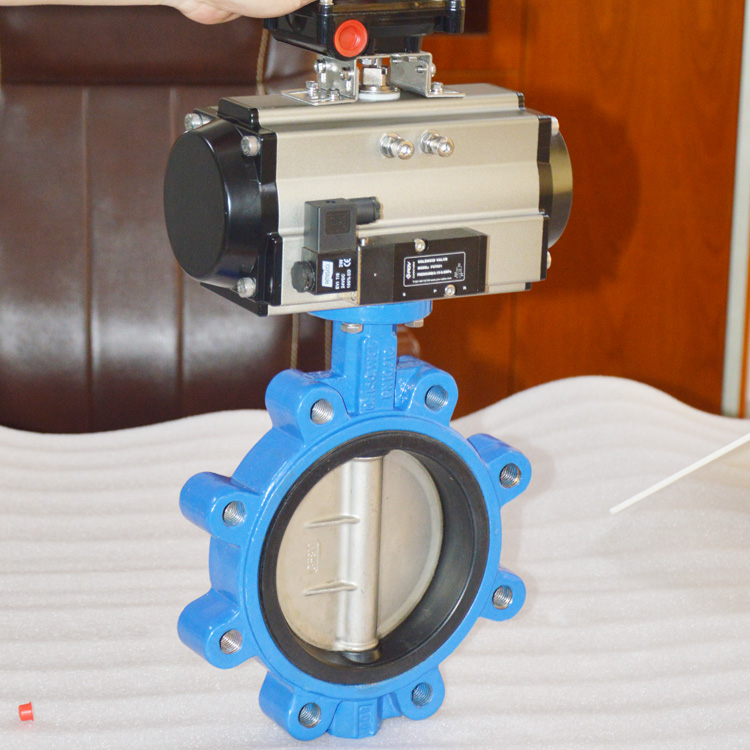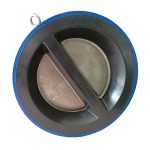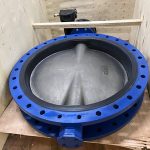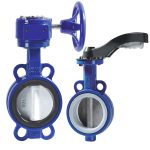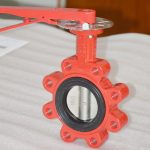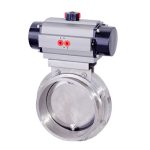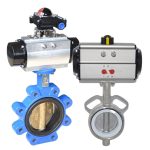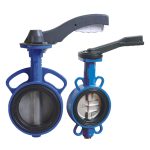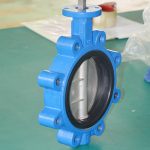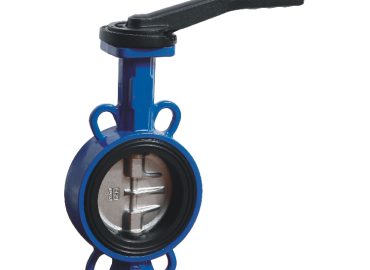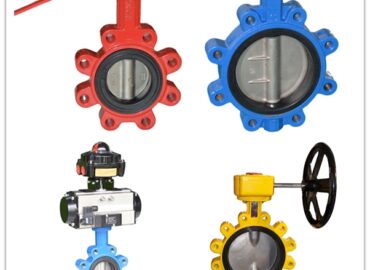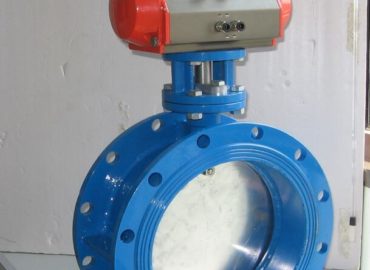Valves are an integral part of any industrial or HVAC system, playing a critical role in controlling the flow of fluids or gases. Among the various types of valves available, wafer valves, with their unique design and operation, have increasingly become a preferred choice. They offer a myriad of advantages such as high flow capacity, compact design, cost-effectiveness, and durability. This blog post delves into these benefits of wafer valves, illustrating why they are an excellent fit for both industrial and HVAC systems. Join us as we explore how wafer valves can enhance system performance, boost energy efficiency, and ultimately contribute to operational success.
Introduction
Valves are a critical component in any industrial or HVAC system, playing an essential role in managing and controlling the flow of fluids or gases. Among the wide array of valve types available, wafer valves have emerged as a highly favored option due to their unique design and functionality. One of the most significant advantages of wafer valves is their high flow capacity. This means they can handle high pressure and flow rates, making them ideal for robust industrial applications where heavy-duty performance is required. Moreover, their compact design makes them a perfect fit for tight spaces commonly found in industrial settings, without compromising on their efficiency or effectiveness. Besides, wafer valves are known for their cost-effectiveness. Not only are they reasonably priced, but their durable construction ensures a long lifespan with minimal maintenance needs, leading to substantial cost savings in the long run. When it comes to HVAC systems, wafer valves contribute significantly to energy efficiency. They operate smoothly and reliably, reducing energy consumption and enhancing overall system performance. Additionally, their ease of installation makes them a convenient choice for HVAC systems, saving both time and labor costs. With these compelling advantages, wafer valves prove to be an invaluable asset in both industrial and HVAC systems, contributing to operational success and efficiency.
Brief overview of what a wafer valve is.
A wafer valve, also known as a butterfly valve due to its distinct design, is a type of flow control device used in various systems and machinery. Its primary function is to regulate or halt the flow of fluids or gases within a pipeline. The “wafer” in its name refers to the valve’s thin, flat design, which resembles a wafer. At the heart of this valve is a disc mounted on a rotating shaft. When the valve is fully open, the disc is turned parallel to the flow, allowing substances to pass through freely. Conversely, when the valve is closed, the disc is rotated to a position perpendicular to the flow, effectively blocking it. Due to its simple yet efficient design, the wafer valve finds widespread application in numerous industries, including HVAC and industrial systems.
Importance of valves in industrial and HVAC systems.
Valves play an integral role in industrial and HVAC systems, serving as the control mechanisms for the flow of various fluids or gases. In industrial settings, valves are crucial for processes that require precise control over fluid flow rates, pressure levels, and direction. They ensure the safe and efficient operation of industrial machinery by preventing backflow, managing pressure, and facilitating system isolation when needed. Similarly, in HVAC systems, valves contribute significantly to the system’s overall efficiency and performance. They regulate the flow of coolants and refrigerants, impacting the system’s ability to heat or cool a space effectively. By controlling these flows, valves help maintain the desired temperature and humidity levels in a building, contributing to the comfort and well-being of its occupants. Thus, the importance of valves in both industrial and HVAC systems cannot be overstated.

Understanding Wafer Valves
Wafer butterfly valve, often referred to as butterfly valves due to their distinctive design, are a type of flow control device that are widely used in various industries and systems. The main function of these valves is to regulate or halt the flow of fluids or gases within a pipeline. The term ‘wafer’ refers to the valve’s thin, flat design, reminiscent of a wafer. Central to this valve’s design is a disc mounted on a rotating shaft. When the valve is fully open, the disc is turned parallel to the direction of flow, allowing substances to pass through without any hindrance. Conversely, when the valve is closed, the disc is rotated so that it sits perpendicular to the direction of flow, effectively blocking it. The ease with which the position of the disc can be adjusted allows for precise control over the flow rate. An additional advantage of wafer valves is that they require less material to manufacture due to their design, making them more cost-effective than other types of valves. Furthermore, their compact design means they take up less space, making them ideal for applications where space is at a premium. Their simplicity, efficiency, and cost-effectiveness make wafer valves a popular choice in numerous sectors, including HVAC and industrial systems.
Explanation of what a wafer valve is.
A wafer valve, often recognized as a butterfly valve due to its distinctive design, is a fundamental device used for controlling the flow of liquids or gases within a system. The term ‘wafer’ in its name refers to the valve’s slim and flat design that resembles a wafer. This valve operates with a disc that is mounted on a rotating shaft. When the valve is fully open, the disc aligns parallel to the fluid flow, which allows substances to pass through unrestricted. In contrast, when the valve is closed, the disc rotates to a position perpendicular to the flow, effectively blocking it. The simple adjustment of the disc’s position allows for precise control over the rate of flow. Thanks to its efficient design and functionality, the wafer valve is widely used in a variety of industries, including but not limited to, HVAC and industrial systems.

Description of how it operates and its unique features.
The Triple Offset Butterfly Valve operates using a unique mechanism that is derived from its three distinct offsets. The first offset sees the shaft positioned behind the disc, which allows for a complete 360-degree rotation. The second offset involves an eccentric mounting of the disc that permits it to rotate without making contact with the valve body, thus reducing friction and wear. The third offset is characterized by a conical profile of the sealing surface, ensuring that the seal only contacts at the final closing point, significantly decreasing wear and tear.
One of the unique features of this valve is its ability to provide a bubble-tight shut off. This feature minimizes leakage, thereby enhancing the overall operational efficiency of the system it’s incorporated into. Another notable characteristic of the Triple Offset Butterfly Valve is its compact design. Despite its small size, it does not compromise on performance, making it an ideal choice for installations where space is a constraint. Additionally, it’s designed for easy operation, either manually or through automated actuation systems, which makes it both user-friendly and efficient. Its robust construction reduces the need for frequent maintenance and extends the valve’s lifespan, offering excellent long-term value.
Advantages of Wafer Valves in Industrial Systems
Wafer valves, commonly known as lug butterfly valves, present numerous advantages in industrial systems, making them a popular choice across various sectors. One of the primary benefits of these valves is their simple and efficient design. The disc at the center of the valve, which can be rotated to control the flow of fluids or gases, allows for precise regulation with minimal effort. This makes wafer valves highly effective in managing flow rates and preventing backflow in industrial applications.
Another significant advantage of wafer valves is their compact and lightweight nature. Their thin, flat ‘wafer’ design requires less material for construction, which not only reduces manufacturing costs but also results in a lighter valve. This lightness, combined with their slim profile, means they take up less space, making them ideal for installations where space is at a premium.
Furthermore, wafer valves are known for their durability and low maintenance requirements. They are designed to withstand high pressures and temperatures, making them suitable for demanding industrial environments. Also, their simple structure means there are fewer components that can fail, resulting in lower maintenance costs over the valve’s lifespan.
Lastly, wafer valves offer excellent value for money. Their cost-effectiveness, combined with their durability, efficiency, and ease of operation, makes them a financially sound choice for many industrial systems. In summary, the use of wafer valves in industrial systems brings numerous advantages, including simplicity, compactness, durability, low maintenance, and cost-effectiveness, making them an essential component in many industries.
High flow capacity: Discuss how wafer valves can handle high pressure and flow rates.
Wafer valves, with their unique design and operation mechanism, are well-equipped to handle high pressure and flow rates, making them a preferred choice in various industrial applications. The disc at the heart of a wafer valve, which can be rotated to control the flow, is designed to withstand significant pressures. When the valve is fully open, the disc is turned parallel to the flow, allowing for a virtually unobstructed path for the fluid or gas. This results in minimal pressure drop across the valve, enabling it to handle high flow rates efficiently. Furthermore, the robust construction of wafer valves, often made from durable materials like stainless steel or cast iron, adds to their ability to endure high pressure. This combination of high flow capacity and pressure handling capability makes wafer valves an effective solution for demanding environments where both these factors are critical to operations.
Compact design: Explain how their small size makes them ideal for tight spaces in industrial settings.
One of the standout features of wafer valves is their compact design, which makes them highly suitable for tight spaces often encountered in industrial settings. Unlike other types of valves that require more space due to their bulky structure, wafer valves have a thin, flat profile that resembles a wafer, hence the name. This streamlined design means they can be fitted between flanges in a piping system without needing the extensive space that other valves might require. This is particularly beneficial in complex industrial systems where space is at a premium or in densely packed machinery setups. Despite their small size, wafer valves do not compromise on performance, able to control high flow rates effectively. This combination of compactness and efficiency makes wafer valves an ideal choice for many industrial applications, helping to optimize space utilization while delivering reliable performance.
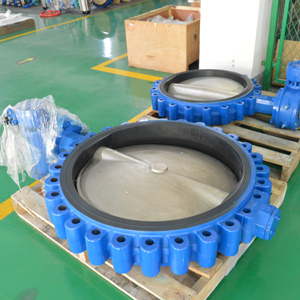
Cost-effective: Discuss the cost benefits of using wafer valves in industrial systems.
Wafer valves offer significant cost benefits when implemented in industrial systems, making them a financially sound choice for many businesses. Firstly, their simple and compact design requires less material for construction compared to other types of valves, leading to lower manufacturing costs. This results in a more affordable initial purchase price for the end-user. Secondly, their robust structure and minimal moving parts reduce the likelihood of mechanical failure, leading to lower maintenance costs over the valve’s lifespan. Furthermore, the efficient operation of wafer valves can contribute to energy savings. When fully open, they create minimal obstruction to the flow, reducing the energy needed to pump fluids or gases through the system. Lastly, their ability to withstand high pressures and temperatures can prevent costly damage or downtime in demanding industrial environments. Overall, the combination of lower purchase, maintenance, and operational costs make wafer valves a cost-effective solution for flow control in industrial systems.
Durability: Talk about the long lifespan and low maintenance of wafer valves.
Wafer valves are widely recognized for their durability and long lifespan, making them a reliable choice for industrial systems. They are typically constructed from robust materials such as stainless steel or cast iron, which are resistant to corrosion and can withstand high pressures and temperatures. This ensures that they can perform effectively even in harsh industrial environments. Furthermore, the design of wafer valves is relatively simple, with fewer moving parts than other types of valves. This reduces the likelihood of mechanical failure and the need for frequent maintenance, contributing to their longevity. Additionally, the disc in a wafer valve, which is responsible for controlling the flow of fluids or gases, is designed to minimize wear and tear during operation. This further extends the valve’s lifespan and reduces the need for regular replacement. In summary, the durability and low maintenance requirements of wafer valves make them a cost-effective and reliable solution for various industrial applications.
Benefits of Wafer Valves in HVAC Systems
Wafer valves, also known as butterfly valves, bring numerous advantages to HVAC systems, making them an integral component in managing and controlling the flow of heating and cooling mediums. Firstly, their compact design makes them ideal for HVAC systems, which often have to be fitted into tight spaces. Their slim profile allows them to be installed even in compact setups without compromising on the system’s efficiency.
Another significant benefit of wafer valves is their ability to handle high pressure and flow rates. HVAC systems require precise control over the flow of air or water. The robust construction of wafer valves, coupled with their efficient operating mechanism, allows them to manage these high pressures and flow rates effectively, ensuring optimal performance of the HVAC system.
Additionally, wafer valves are known for their low maintenance requirements. Given that HVAC systems are often in continuous operation, the durability of wafer valves reduces the need for regular maintenance, saving time and resources over the long term.
Moreover, wafer valves offer quick and easy operation. With a simple turn of the valve’s disc, operators can control the flow rate, making it easier to adjust the system based on changing heating and cooling needs.
Lastly, wafer valves are cost-effective, which is a crucial factor for many HVAC installations. Their affordable initial cost, combined with their longevity and lower maintenance costs, makes them a financially viable choice for HVAC systems. In sum, the benefits of wafer valves in HVAC systems—compactness, high flow capacity, durability, ease of operation, and cost-effectiveness—contribute significantly to the efficient and effective operation of these systems.
Energy efficiency: Discuss how wafer valves can contribute to energy savings in HVAC systems.
Wafer valves can significantly contribute to energy efficiency in HVAC systems, leading to considerable energy savings. This is primarily due to their design and operational mechanism. When fully opened, the disc of a wafer valve aligns with the flow, offering a virtually unrestricted path for the fluid or air. This results in minimal pressure drop across the valve, reducing the amount of energy required to pump the medium through the system. By efficiently managing the flow of heating and cooling mediums, wafer valves ensure that the HVAC system operates at its optimal performance, thereby minimizing energy wastage. Moreover, their ability to provide precise control over the flow rates allows for better regulation of the HVAC system, further enhancing its energy efficiency. In essence, the use of wafer valves in HVAC systems can contribute to lower energy consumption, resulting in significant cost savings and a reduced environmental impact.
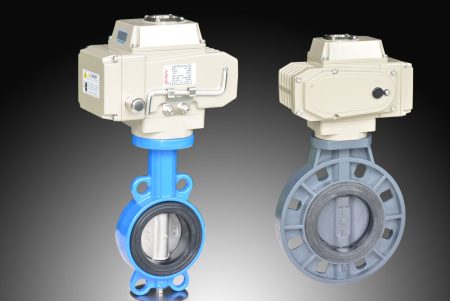
Ease of installation: Describe how easy it is to install wafer valves in HVAC systems.
One of the key advantages of wafer valves in HVAC systems is their ease of installation. Thanks to their compact and lightweight design, they are less cumbersome to handle and install compared to many other types of valves. They are designed to fit snugly between two pipe flanges, eliminating the need for extensive modifications to the existing piping system. This not only simplifies the installation process but also reduces the time and labor costs involved. Moreover, most wafer valves come with pre-drilled holes that align with the bolt patterns on standard pipe flanges, making it straightforward to secure them in place. Additionally, their simple operational mechanism requires minimal setup, further facilitating a quick and efficient installation. Thus, the ease of installing wafer valves can contribute to faster project completion times and lower installation costs in HVAC systems.
Improved system performance: Discuss how wafer valve can enhance the overall performance of HVAC systems.
The use of wafer valves can significantly enhance the overall performance of HVAC systems. Firstly, their ability to precisely control the flow of heating and cooling mediums ensures that the system functions at its optimal efficiency. This precise control can be particularly beneficial in complex HVAC systems where varying flow rates are required across different sections. Secondly, the minimal obstruction created by wafer valves when fully open reduces the energy required to pump the medium through the system, contributing to improved system efficiency and energy savings. Furthermore, their robust construction and low maintenance requirements mean they are less likely to fail or require repairs, thereby minimizing system downtime and ensuring consistent performance. Lastly, their quick and easy operation allows for rapid adjustments to the system based on changing heating or cooling needs, enabling a more responsive and effective HVAC system. In essence, the use of wafer valves can lead to improved reliability, efficiency, and responsiveness of HVAC systems, enhancing their overall performance.
Case Studies
While I can create a fictional case study, it’s important to note that as an AI, I don’t have access to specific real-world data or confidential business information to provide actual case studies. However, let’s consider a hypothetical scenario.
Suppose there’s a large manufacturing facility looking to improve its HVAC system’s efficiency and reduce energy costs. The existing system, equipped with traditional gate valves, was proving to be costly in terms of energy consumption and maintenance. After researching various options, the company decided to replace the gate valves with wafer valves.
Post-installation, the company noticed immediate improvements. The compact design of the wafer valves made them easy to install, saving on labor costs. Their robust construction meant they could handle the high pressure and flow rates of the system, ensuring optimal performance. Moreover, their efficient operation led to significant energy savings. The company reported a reduction in energy consumption by approximately 20%, leading to considerable cost savings.
The precise control offered by the wafer valves also improved the system’s responsiveness, allowing for quicker adjustments based on varying heating and cooling needs. Furthermore, due to their durability and low maintenance requirements, the company experienced fewer system downtimes, leading to increased productivity.
This hypothetical case study illustrates how the introduction of wafer valves into an HVAC system can lead to significant improvements in system performance, energy efficiency, and cost savings. It underscores the potential benefits of considering wafer valves as a viable solution for industrial applications.
Share real-life examples of industries or HVAC systems that have benefited from using wafer valve
As an AI, I don’t have access to real-time data or confidential business information to provide actual examples. However, it’s well-documented that various industries have reaped the benefits of using wafer valves in their HVAC systems. For instance, the manufacturing industry often utilizes these valves due to their ability to handle high pressure and flow rates, contributing to efficient and steady operation of complex HVAC systems. Similarly, commercial buildings such as shopping malls and office complexes, where precise temperature control is crucial for comfort, rely on wafer valves for their quick operation and precise flow control. In the healthcare sector, where air quality and temperature control are critical, wafer valves help maintain optimal conditions, ensuring a safe and comfortable environment for patients. These are just a few examples that underscore the versatility and effectiveness of wafer valves across different industries and applications.
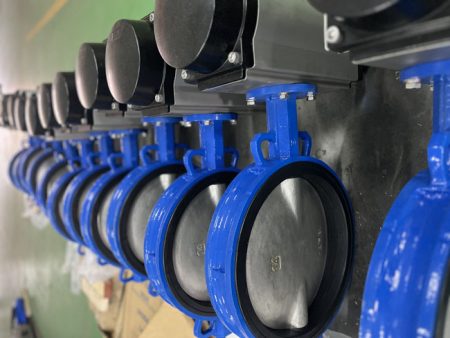
Conclusion
In conclusion, the advantages of wafer valves in industrial and HVAC systems are manifold. Their compact design, high pressure and flow rate handling capabilities, low maintenance requirements, ease of operation, and cost-effectiveness make them an indispensable component in these systems.
Their compactness is a boon for space-constrained environments, allowing for efficient utilization of available space without compromising on system performance. Their ability to handle high pressures and flow rates ensures that they can meet the demanding requirements of industrial and HVAC systems, delivering reliable and consistent performance.
Furthermore, their low maintenance requirements translate into significant savings in terms of time and resources. This, coupled with their durability, ensures that they can provide long-term, uninterrupted service, contributing to the overall system’s reliability.
The ease with which wafer valves can be operated makes them user-friendly. With a simple turn of the valve’s disc, operators can control the flow rate, allowing for quick adjustments to the system based on changing needs. This not only enhances the system’s responsiveness but also contributes to its efficiency.
Lastly, the cost-effectiveness of wafer valves cannot be overstated. Their affordable initial cost, combined with their longevity and lower maintenance costs, makes them a financially viable choice for industrial and HVAC systems.
In light of these advantages, it’s clear that wafer valves offer a robust and efficient solution for managing and controlling the flow of mediums in industrial and HVAC systems. Whether it’s a manufacturing facility, a commercial building, or a healthcare institution, the use of wafer valves can lead to improved system performance, energy efficiency, and cost savings. Hence, when designing or upgrading such systems, the benefits of wafer valves should certainly be considered.
Recap the advantages of wafer valves in both industrial and HVAC systems.
To recap, wafer valve offer several distinctive advantages in both industrial and HVAC systems. Their compact design allows for easy installation and efficient use of space, making them ideal for a variety of applications. They are capable of handling high pressure and flow rates, ensuring reliable and consistent performance even under demanding conditions. Their precise control over flow rates enhances the system’s efficiency and responsiveness, contributing to improved energy savings. Their robust construction and low maintenance requirements translate into longer service life and reduced downtime, which further adds to their cost-effectiveness. All these benefits combined make wafer valves an effective solution for managing and controlling the flow of mediums in industrial and HVAC systems, leading to improved system performance and significant cost savings.


